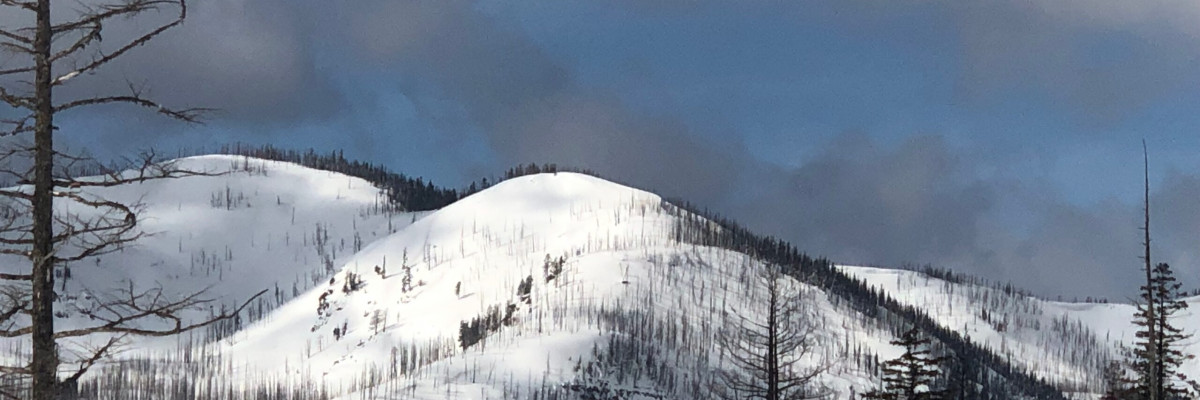The current avalanche danger is MODERATE for the West Central Montana backcountry. Small winds slabs are possible on wind drifted terrain, and large stubborn wind slabs over weak snow or deep large avalanches are possible in isolated locations. Carefully evaluate terrain and the snowpack to identify locations where hazards exist.
Good morning, this is Logan King with the West Central Montana Avalanche Center’s avalanche advisory for Saturday, March 9th, 2019. This danger rating does not apply to operating ski areas, expires at midnight tonight and is the sole responsibility of the U.S. Forest Service.
Weather and Snowpack
Winds this morning are light out of the SW to WSW. Mountain temperatures are around 10 degrees Fahrenheit as of 4 am. Most locations picked up a trace to 1 inch of snow over the past 24 hours but due to the scattered and showery nature of the flurries, some locations have received up to 2-4 inches of snow.
Small wind slabs that are only a few inches thick can release with high energy and carry a person into terrain traps. Look for any signs of wind loading like sastrugi and cornices to determine what slopes have been loaded keeping in mind that wind slabs are likely obscured under the trace to few inches of snow that we have seen over the last couple of days. Larger wind slabs are possible at upper elevations near ridgelines or on open cross-loaded terrain and will be most reactive in locations where they formed over weak faceted snow. Many locations have experienced winds shifting back and forth from east and west, making wind slabs possible on any slope with significant local variability.
There is a lot of faceted and weak snow throughout the advisory area. Most of which is unreactive except when a denser slab is overlaying the weak layer (wind slabs). However, the greatest persistent slab concern is deep persistent slabs. In isolated locations with shallow snowpacks above 6,000 feet, large-grained facets near the ground can fail (Video). The avalanches failing on depth hoar will be big and have serious consequences. This problem is not widespread and hard to pinpoint unless you dig a pit to identify how deep the snowpack is and if depth hoar is present and reactive.
Loose wet avalanche activity is increasing as the days get longer and solar radiation increases. Surface crusts can be found on solar aspects to about mid-elevations, but with more sun and warmer temperatures (still below average), the crusts will continue to move upslope. With crust development, the melt-freeze process will produce diurnal cycles of loose wet avalanches. On the southern half of the compass and in steep terrain expect to see rollerballs forming by midday and leading to loose wet sluffs. These avalanches are small and slow-moving but can easily injure a person or become dangerous if terrain traps are present.
Avalanche and Weather Outlook
Mostly clear skies will be interrupted by scattered snow showers through the day today. Snowfall will be light and sporadic with minimal accumulation. Light winds will continue, predominantly out of the SW. The avalanche danger will remain the same through the weekend until a shift occurs in the weather which looks to be setting up for mid-week (forecast)
If you get out into the backcountry, please share your observations on our public observation page.
Ski and ride safe.














